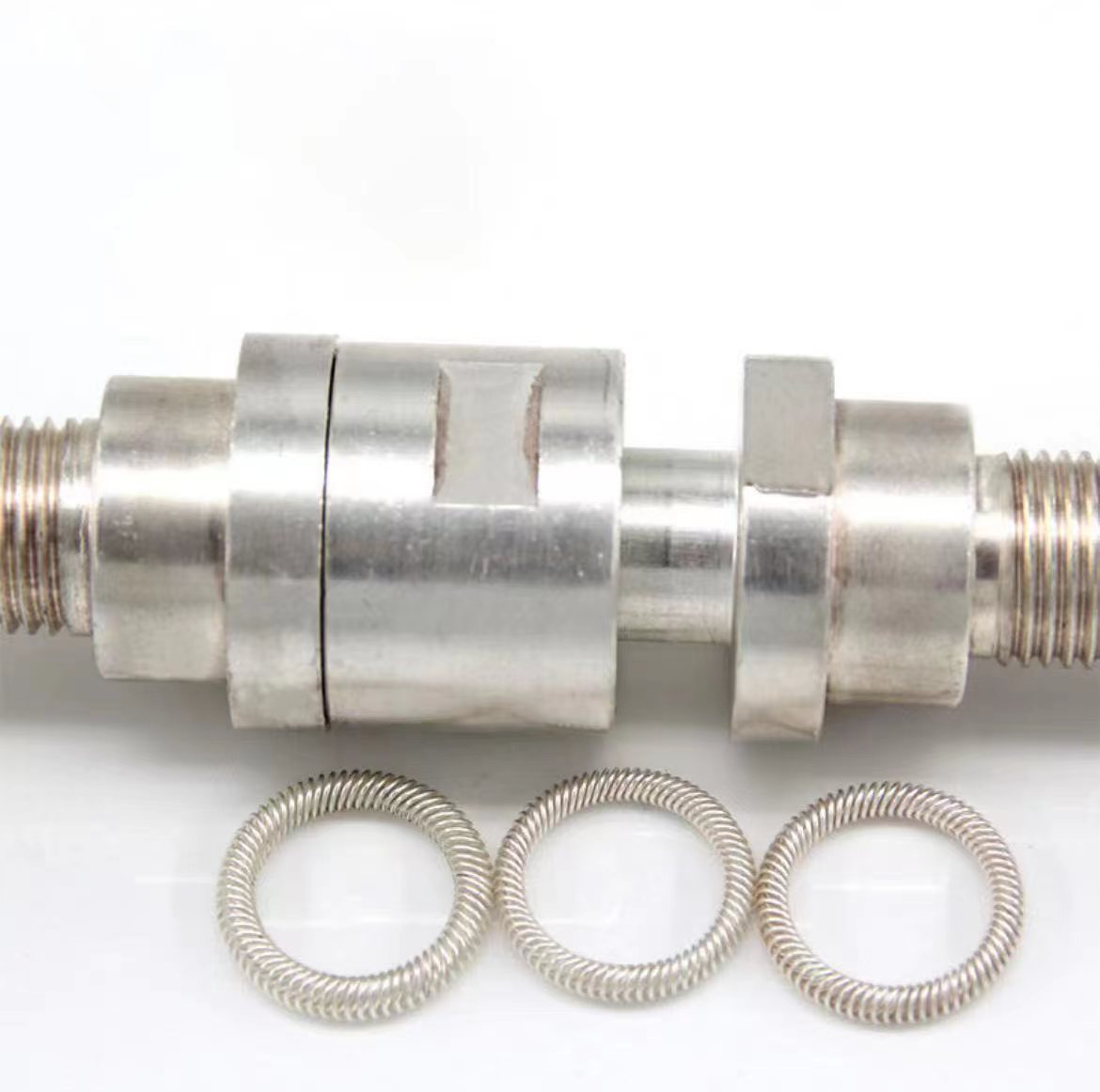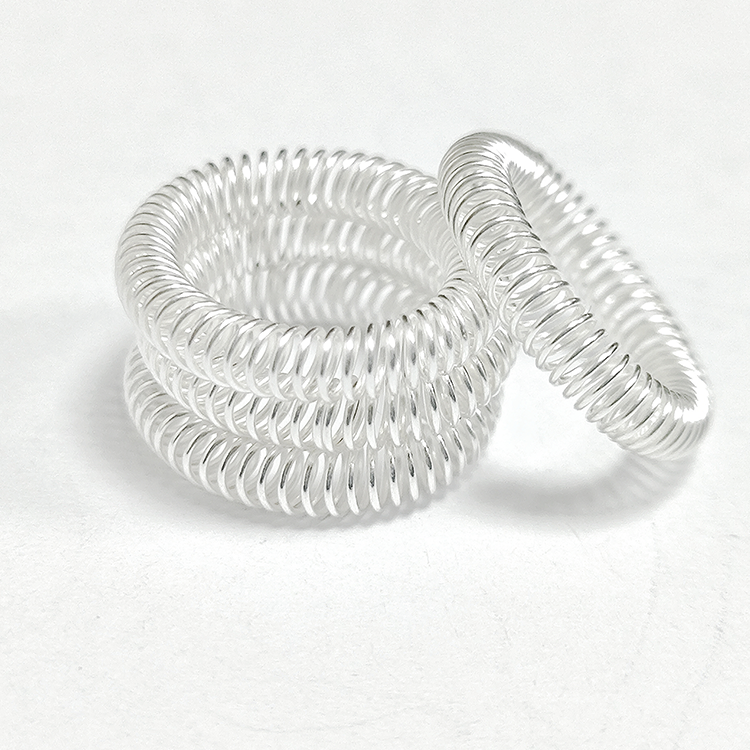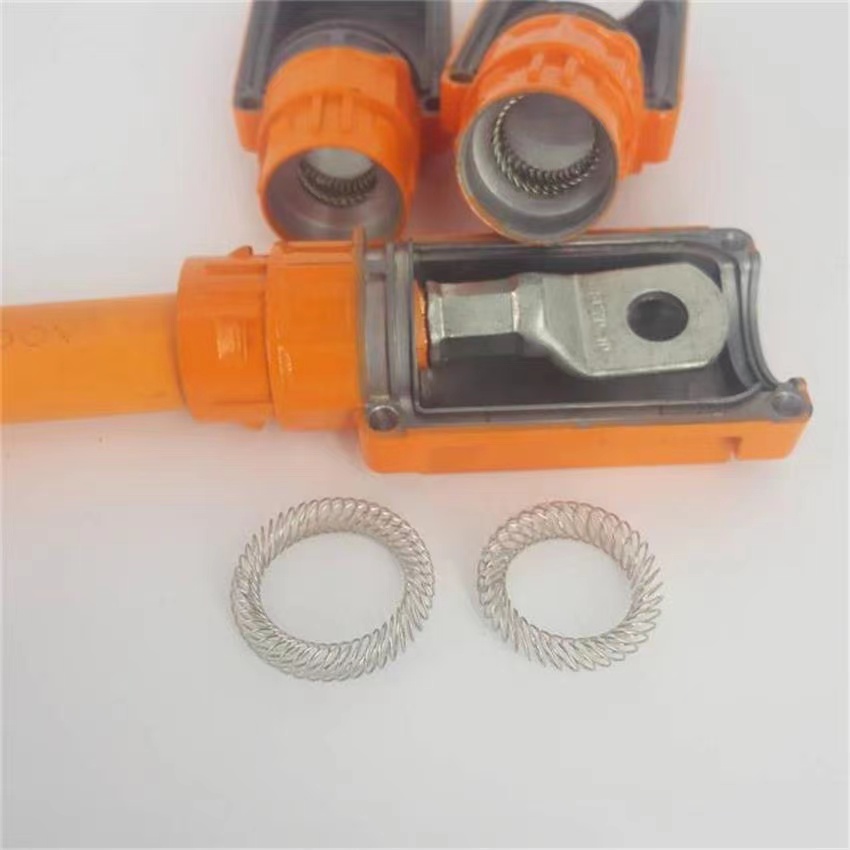Touch Springs can be used as an effective electrical conductor. There are application scenarios such as oscillations, dynamic conditions, and shock loads that can still provide reliable current conduction.

① Situations that pose challenges to transmission
Certain operating conditions may make it difficult to achieve a solid conductive connection. For example, oscillatory and shock loads (such as those experienced in down-hole equipment in petrochemical industries) can ultimately lead to more traditional electrical connections that become loose and endanger the integrity of signal and power transmission.
Any time there is a high probability of movement, such as EV/HEV battery pack connection, there is also a risk of damage to the integrity of the electrical connection. In the electrical profession, performing high current applications for conduction, grounding, and isolation can cause heating and security issues.
Rotating components, high temperatures, and load changes are also challenging to adhere to electrical connections, and are common in wind energy applications involving turbines. In addition, there are similar problems with rotating components in robotic end clamps and similar automation devices.
In addition, lightweight planning methods are crucial for many applications, including unmanned vehicles that require lightweight to maximize battery constrained scale. And some applications, such as semiconductor fabrication, require solutions that can perform multiple purposes, such as conduction in combination with latch/hold/confirm or EMI shielding.

② Stylus spring
Touch springs, also known as oblique coil springs or skew coil springs, are commonly used as conductive springs to achieve high integrity connections in applications. However, there are several factors that make these springs different.
The first is that they can adhere to consistent forces in large-scale deflections. Despite appearance irregularities, misalignment, public service changes, and scale changes, the individual coils that make up these springs still adhere to touch with the cooperative appearance. In addition, they have almost no compression permanent deformation and are very suitable for special-shaped cross sections.
When used as a conductive spring, a single coil serves as multiple touch points for conducting electricity and grounding; Essentially, each coil is a touch point. As long as a coil adheres to touch with the surface, it can adhere to electrical connection.
③ Conductive advantages of touch finger springs
When finger springs are used for conducting electricity, they have many advantages over more traditional methods. For example, in addition to being made of materials with high conductivity, stylus springs can also be planned to meet specific electrical requirements. Changes in parameters such as spring diameter, wire diameter, coil height, skew angle, and turns make it possible to adjust the amperage and resistance to optimize the solution. In addition, coatings such as gold or silver can also be used to achieve ultra-low impedance.

Due to the large surface area of the touch springs, they can transmit high power levels and generate less heat together than traditional solutions. Therefore, even at extremely high temperatures, they can provide excellent heat and power flow carrying capacity. This same aspect is also important in implantable devices. For the safety of patients, it is necessary to minimize the occurrence of heat. In addition to its electrical conductivity, stylus springs can also serve as excellent EMI/RF shielding layers for down-hole applications such as oil exploration.
The stylus spring supports space, component, and power requirements, reducing system complexity together. In addition to conducting electricity, when they are used for mechanical fastening (latching, securing, or holding), this system is generally seen to be simplified. Compared to equivalent conductivity solutions, they can achieve greater touch density in a smaller space. As mentioned earlier, one of the outstanding characteristics of stylus springs is their ability to provide a specific force level for fastening including low force insertion.
Despite factors such as impact and shock loads, viewpoint deviation oscillations, scale changes, and cooperative appearance irregularities, these springs are still able to maintain contact with the appearance. In addition, they have been applied with corrosion resistant materials and coatings to maintain their function under other harsh conditions. If planned and installed correctly, stylus springs can reduce the likelihood of conductor fatigue failure associated with repeated insertion/removal cycles. Their minimal tightening deformation also helps extend their service life.
Finally, in medical, pharmaceutical, food, and beverage applications, stylus springs are easy to clean and disinfect.Touch springs are used as highly reliable electrical conductors in professions such as medicine, transportation, aerospace, semiconductor manufacturing, industry, power, and national defense. From surgical bone saws to guided weapons, stylus springs provide a reliable and effective conductive solution.